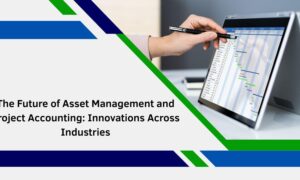In today’s fast-paced business landscape, effective asset management is crucial for the sustained growth and profitability of any organization. Asset management involves the systematic control, monitoring, and optimization of an organization’s valuable resources. In this article, we will delve into the world of asset management, exploring its importance, strategies, and the role of technology in ensuring the efficient utilization of assets.
Understanding Asset Management
Asset management encompasses a wide array of activities related to a company’s resources, both tangible and intangible. These assets can include real estate, machinery, technology, intellectual property, and financial investments. Effective management of these assets is essential for ensuring that they contribute to the overall success of the business.
Importance of Asset Management
Efficient asset management provides numerous benefits for an organization. Here are some key advantages:
Cost Reduction: Proper asset management helps in identifying underutilized or redundant assets, leading to cost savings.
Risk Mitigation: It minimizes the risk of asset loss, damage, or theft by ensuring proper maintenance and security.
Compliance: Asset management ensures that the organization adheres to regulatory requirements, preventing legal issues.
Improved Decision-Making: Data-driven insights from asset management systems empower better strategic decision-making.
Strategies for Effective Asset Management
To maximize the potential of asset management, consider the following strategies:
Asset Inventory: Start with a comprehensive inventory of all assets, including their location, condition, and value.
Lifecycle Management: Implement a lifecycle management approach to assess the asset’s journey from acquisition to disposal.
Maintenance and Repairs: Regular maintenance schedules and timely repairs are crucial to extend an asset’s lifespan and optimize its performance.
Data-Driven Decisions: Use data analytics to make informed decisions regarding asset allocation, maintenance, and upgrades.
Asset Tracking: Employ tracking tools like RFID or GPS to monitor the location and movement of valuable assets.
Role of Technology in Asset Management
Modern businesses rely heavily on technology to streamline their asset management processes. Here are some key technological advancements:
Asset Management Software: Invest in robust asset management software that provides real-time data on asset performance and maintenance needs.
IoT Integration: The Internet of Things (IoT) enables assets to communicate their status and requirements, optimizing maintenance and operations.
Predictive Analytics: Machine learning and predictive analytics can forecast maintenance needs, preventing unexpected breakdowns.
Blockchain for Asset Verification: Blockchain technology can be used to ensure the authenticity and history of high-value assets.
Challenges in Asset Management
While asset management offers substantial benefits, it also comes with challenges, including:
Data Security: Protecting sensitive asset data from cyber threats is a critical concern.
Cost of Technology Adoption: Implementing advanced asset management technology can be expensive.
Resistance to Change: Employees may resist new asset management processes, necessitating thorough training and change management strategies.
Data Overload: Managing the vast amount of data generated by asset tracking systems can be overwhelming without proper data analysis tools.
The Future of Asset Management
Asset management is evolving rapidly, with a promising future. As technology continues to advance, asset management will become more automated and data-driven, enabling businesses to further optimize their resource utilization.
AI and Machine Learning: These technologies will play a vital role in predicting maintenance needs and optimizing asset performance.
Sustainability: Asset management will increasingly focus on sustainable practices, considering the environmental impact of assets.
Interconnectivity: Assets will be more interconnected, creating a seamless flow of data for better decision-making.
Conclusion
In the ever-changing world of business, asset management remains a cornerstone of success. It ensures that your valuable resources are utilized efficiently, costs are minimized, and risks are mitigated. Embracing technological advancements, such as asset management software and IoT integration, is essential to staying competitive in today’s market. With the right strategies in place, asset management can be a driving force behind your organization’s growth and prosperity.



































